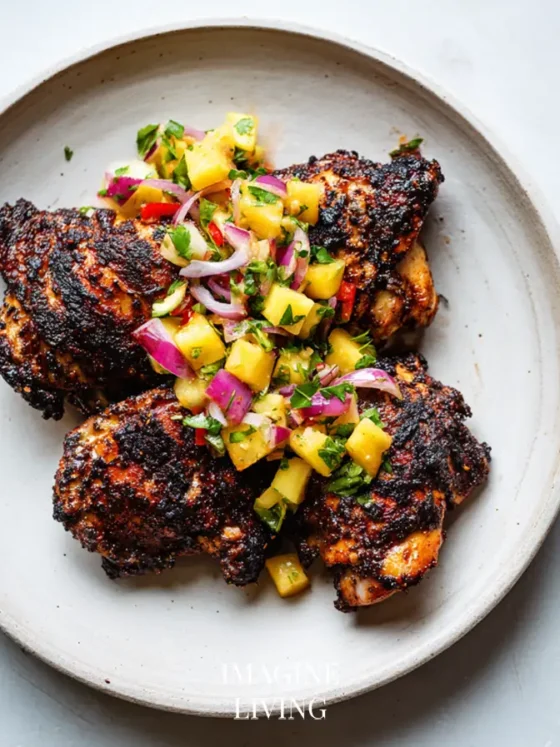Fresh Basil Pesto Pasta: A Burst of Freshness in Every Bite
Walking from Santa Margherita Ligure to Portofino is one of those experiences that stays with you—not just for the stunning coastal views but for the way it makes you appreciate a good meal. The sun was warm, the salty breeze refreshing, and with every step along the winding trail, the scent of wild herbs filled the air. By the time we reached Portofino, hunger had fully set in. We found a small trattoria tucked away near the harbor, where the smell of fresh basil and garlic practically pulled us inside.
That first plate of pesto pasta was unforgettable. The sauce, silky and vibrant, clung perfectly to every strand of spaghetti, bursting with the fresh flavors of basil, parmesan, and toasted pine nuts. It wasn’t just food—it was the taste of Liguria, simple yet packed with so much character.
This fresh basil pesto pasta brings that same experience to your kitchen. It’s quick, packed with bold flavors, and feels like a little getaway to the Italian Riviera in every bite. Whether you’re making it for a weeknight dinner or a special meal with friends, this dish proves that the best recipes don’t need to be complicated—just made with great ingredients and a little love.
“Cooking is an art, but all art requires knowing something about the techniques and materials.” – Nathan Myhrvold.
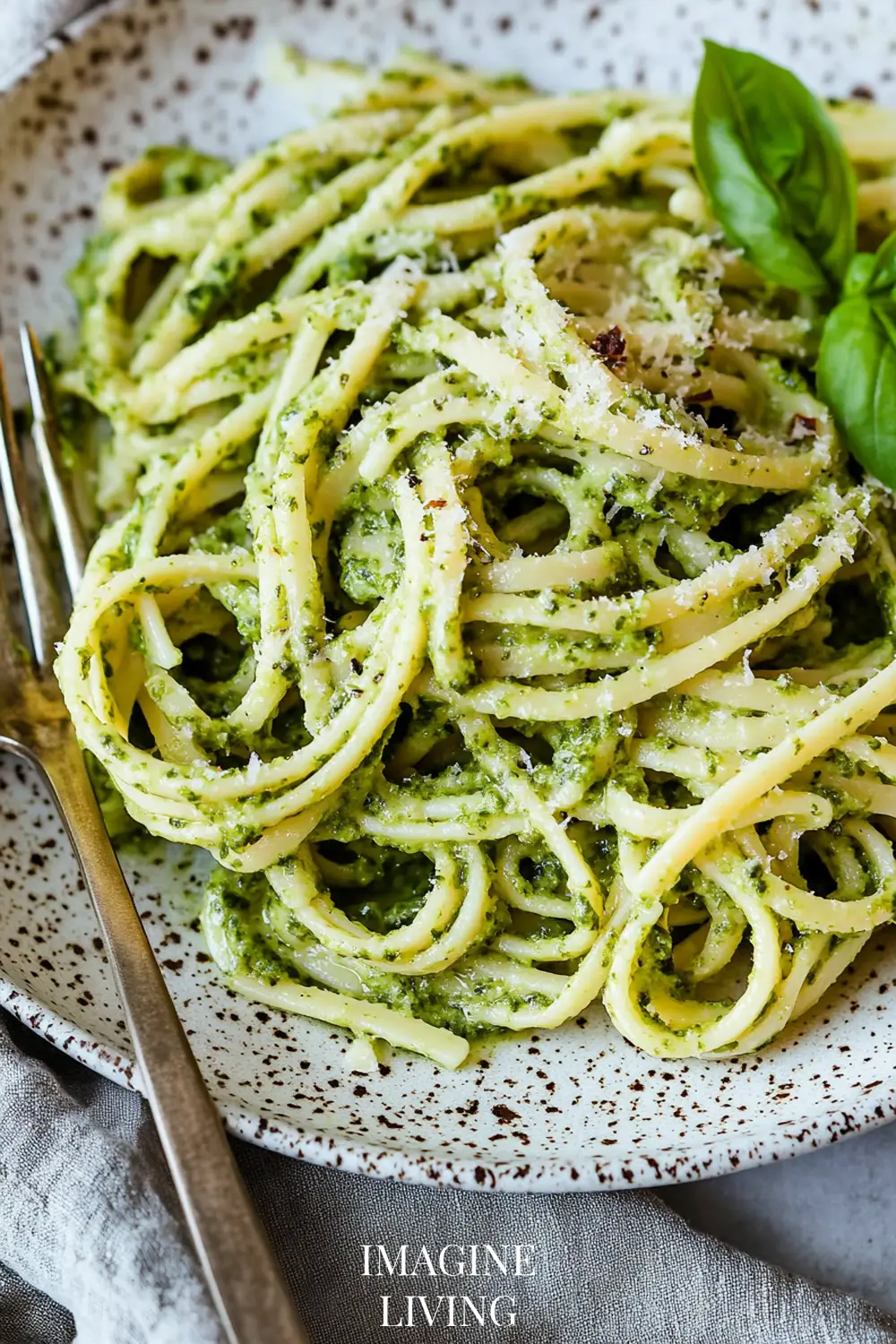
Why You’ll Love This Recipe
- Quick and easy – Ready in under 30 minutes, perfect for busy weeknights.
- Bursting with fresh flavors – The vibrant basil, nutty parmesan, and rich olive oil create an incredible taste.
- Versatile – Use it as a pasta sauce, sandwich spread, or drizzle over roasted veggies.
- Healthy and nutritious – Packed with antioxidants and healthy fats.
“The simplest ingredients often make the most delicious meals.”
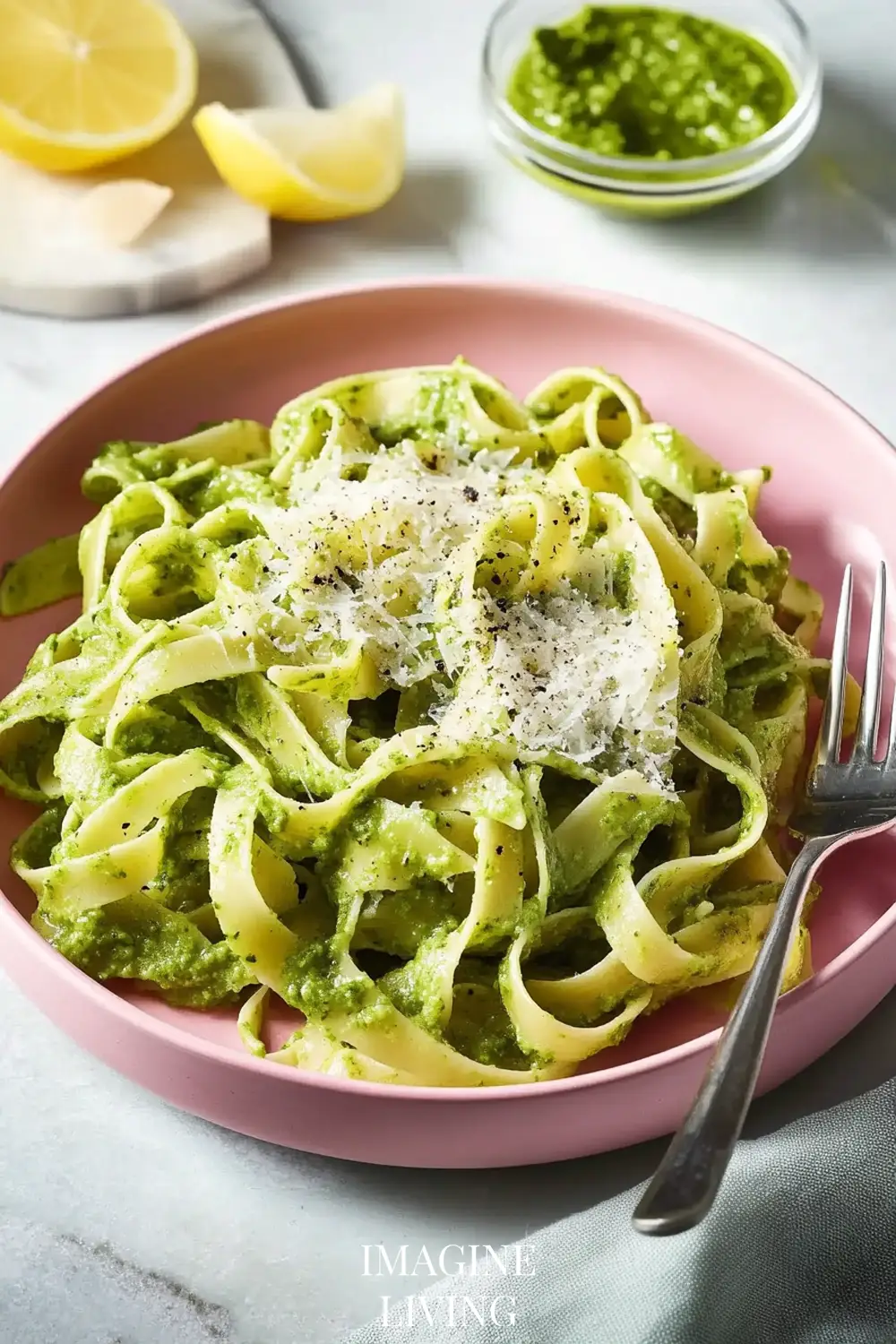
Ingredients: A Perfect Blend for Fresh Basil Pesto Pasta
For the Pesto Sauce:
- 2 cups fresh basil leaves, packed
- 1/2 cup grated parmesan cheese
- 1/3 cup extra virgin olive oil
- 1/4 cup pine nuts (or walnuts for a budget-friendly option)
- 2 cloves garlic, minced
- 1/2 teaspoon salt
- 1/4 teaspoon black pepper
- Juice of 1/2 lemon
For the Pasta:
- 12 ounces spaghetti or linguine
- 1/2 cup reserved pasta water
- 1 tablespoon olive oil
- 1/4 teaspoon red pepper flakes (optional, for heat)
- Extra parmesan and fresh basil for garnish
Equipment Needed
- Food processor or blender
- Large pot for boiling pasta
- Colander
- Mixing bowl
- Measuring cups and spoons
- Wooden spoon or spatula

Step-by-Step Guide to Fresh Basil Pesto Pasta
Prepare the Pesto
- In a food processor, combine basil, parmesan, pine nuts, garlic, salt, and pepper. Pulse until roughly chopped.
- Slowly drizzle in olive oil while blending until smooth.
- Add lemon juice and blend again. Taste and adjust seasoning if needed.
Tip: If the pesto is too thick, add a tablespoon of pasta water to loosen it.
Cook the Pasta
- Bring a large pot of salted water to a boil.
- Cook the pasta according to package instructions until al dente.
- Reserve 1/2 cup of pasta water before draining.
Tip: Stir the pasta occasionally to prevent sticking.
Combine and Serve
- Return drained pasta to the pot and add pesto sauce.
- Toss well, adding reserved pasta water gradually until desired consistency is reached.
- Drizzle with olive oil and sprinkle with red pepper flakes if using.
- Serve immediately, garnished with extra parmesan and fresh basil.
“Food brings people together on many different levels. It’s nourishment of the soul and body.” – Giada De Laurentiis.
Time Needed
- Prep Time: 10 minutes
- Cook Time: 10 minutes
- Total Time: 20 minutes

Pro Tips for the Best Basil Pesto Pasta
The first time I made homemade pesto, I threw everything into the blender at once, eager to recreate the magic of that perfect plate we had in Portofino. But something was off—the flavors weren’t as bold, and the texture was too smooth. Over time, I picked up a few tricks that made all the difference. Here’s how to get pesto pasta just right:
- Use the freshest basil you can find – Basil bruises easily, and once it starts to wilt, the flavor dulls. For that vibrant, peppery aroma, use bright green leaves and avoid any that look limp or yellowing.
- Toast the nuts for extra depth – In Liguria, I noticed a richer, almost buttery taste in the pesto, and I later learned the secret—lightly toasting the pine nuts. Just a minute or two in a dry pan releases their oils, making the pesto even more flavorful.
- Don’t over-blend – It’s tempting to let the blender run for a super smooth sauce, but over-processing can make pesto bitter. A few pulses are all you need to keep it fresh and flavorful.
- Save that pasta water! – Adding a splash of reserved pasta water helps the pesto coat the noodles perfectly, making the sauce velvety instead of clumpy.
- Drizzle olive oil on top before storing – Nothing’s worse than opening your pesto the next day and finding it brown. A thin layer of olive oil on top keeps it fresh and green.
Creative Variations: Customize Your Basil Pesto Pasta
One of the best things about pesto is how adaptable it is. After tasting the classic version in Portofino, I started experimenting with different ingredients, and some of my favorite variations were actually happy accidents. Whether you’re looking for a twist on tradition or working with what’s in your kitchen, here are some fun ways to make this dish your own.
Nut-Free Pesto
Swap pine nuts for sunflower seeds or pumpkin seeds for a budget-friendly, allergy-safe alternative.
Tip: Toasting the seeds brings out a deep, nutty flavor that mimics the richness of traditional pesto.
Vegan Pesto
Replace parmesan with nutritional yeast or a handful of toasted cashews for a creamy, dairy-free option.
Tip: Nutritional yeast adds that signature cheesy umami taste without any dairy.
Spicy Calabrian Chili Pesto
Add a spoonful of Calabrian chili paste or a few red pepper flakes to give your pesto a bold, spicy kick.
Tip: The heat pairs beautifully with the creaminess of the sauce—just a little goes a long way!
Creamy Avocado Pesto
Blend in half an avocado for a silkier, richer sauce that’s extra creamy without any dairy.
Tip: This version works especially well with short pasta shapes like fusilli or penne that hold the sauce in every groove.
Lemon Arugula Pesto
Replace half the basil with fresh arugula and add extra lemon juice for a peppery, citrusy twist.
Tip: This variation is perfect for pairing with seafood, like shrimp or grilled salmon.
Pistachio Pesto
Swap pine nuts for pistachios for a slightly sweeter, deeper flavor. This version is inspired by Sicily, where pistachios are often used in pasta sauces.
Tip: Use Sicilian pistachios if you can find them—they’re sweeter and more vibrant than the regular kind!
Roasted Garlic Pesto
Replace raw garlic with roasted garlic for a milder, slightly caramelized depth of flavor.
Tip: Roast the garlic in olive oil at 375°F for 20 minutes until soft and golden, then blend it into your pesto for a richer taste.
“Great food is like great music. The flavors should harmonize and create something unforgettable.”
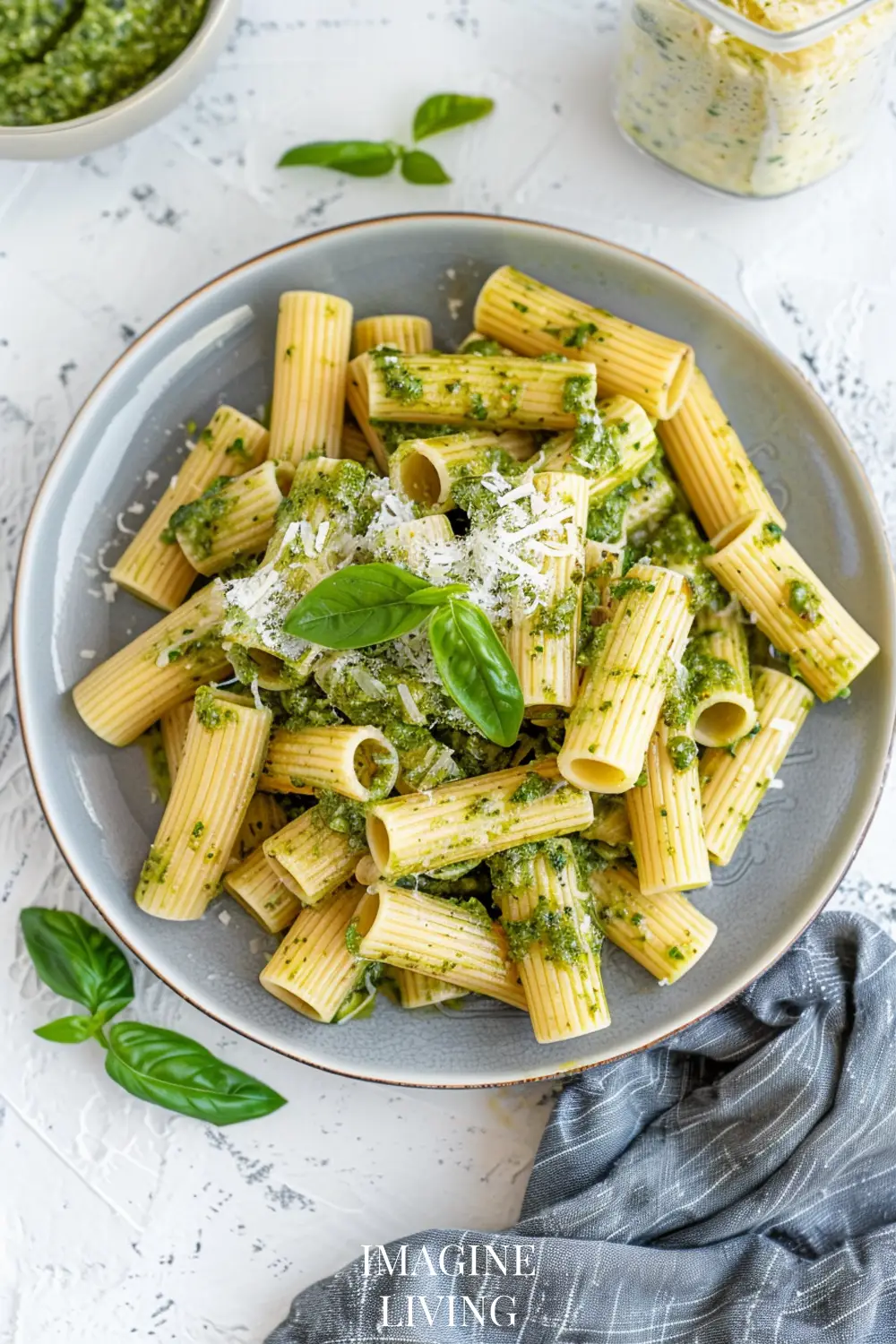
Serving Suggestions
- Pair with a crisp arugula salad with balsamic vinaigrette.
- Serve alongside grilled chicken or shrimp for extra protein.
- Enjoy with a glass of chilled white wine like Sauvignon Blanc.
Storage and Reheating
- Refrigeration: Store pesto in an airtight container for up to 5 days.
- Freezing: Freeze in ice cube trays, then transfer cubes to a freezer bag for up to 3 months.
- Reheating: Reheat pasta gently over low heat, adding a splash of water or olive oil.
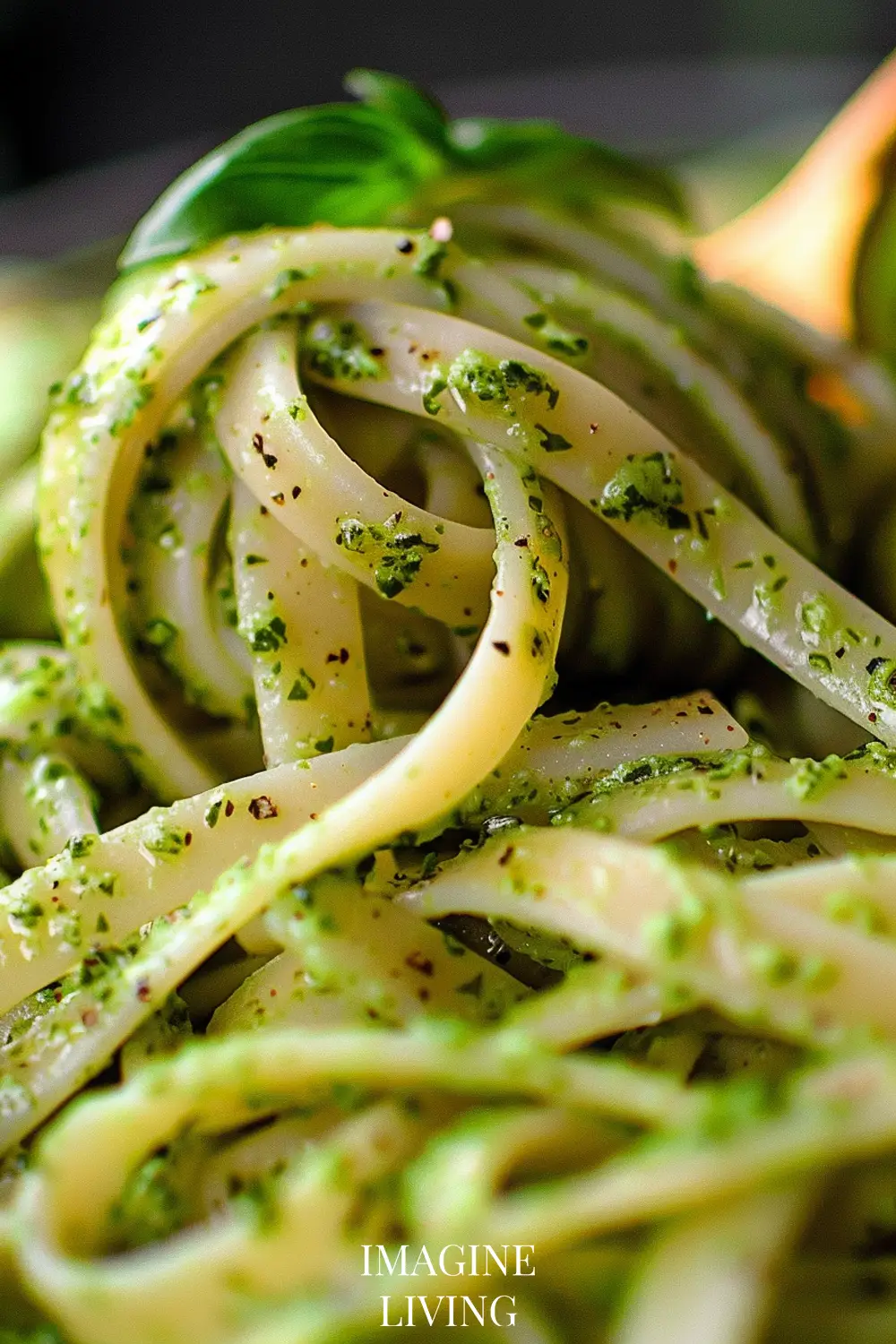
Common Mistakes to Avoid
Overcooking the Pasta
Pasta should be al dente to hold the sauce well.
Tip: Taste the pasta a minute before the suggested cooking time.
Using Old Basil
Wilted basil leaves can make the pesto taste dull.
Tip: Use fresh, bright green basil leaves for the best flavor.
Skipping the Toasting Step
Toasting the nuts enhances their flavor and aroma.
Tip: Toast in a dry pan over medium heat for 2-3 minutes, stirring constantly.
Adding All the Oil at Once
Gradually drizzling the oil ensures a smooth emulsion.
Tip: Blend while slowly adding oil to prevent separation.
Storing Pesto Without Protection
Pesto oxidizes and turns brown when exposed to air.
Tip: Drizzle a thin layer of olive oil on top before storing.
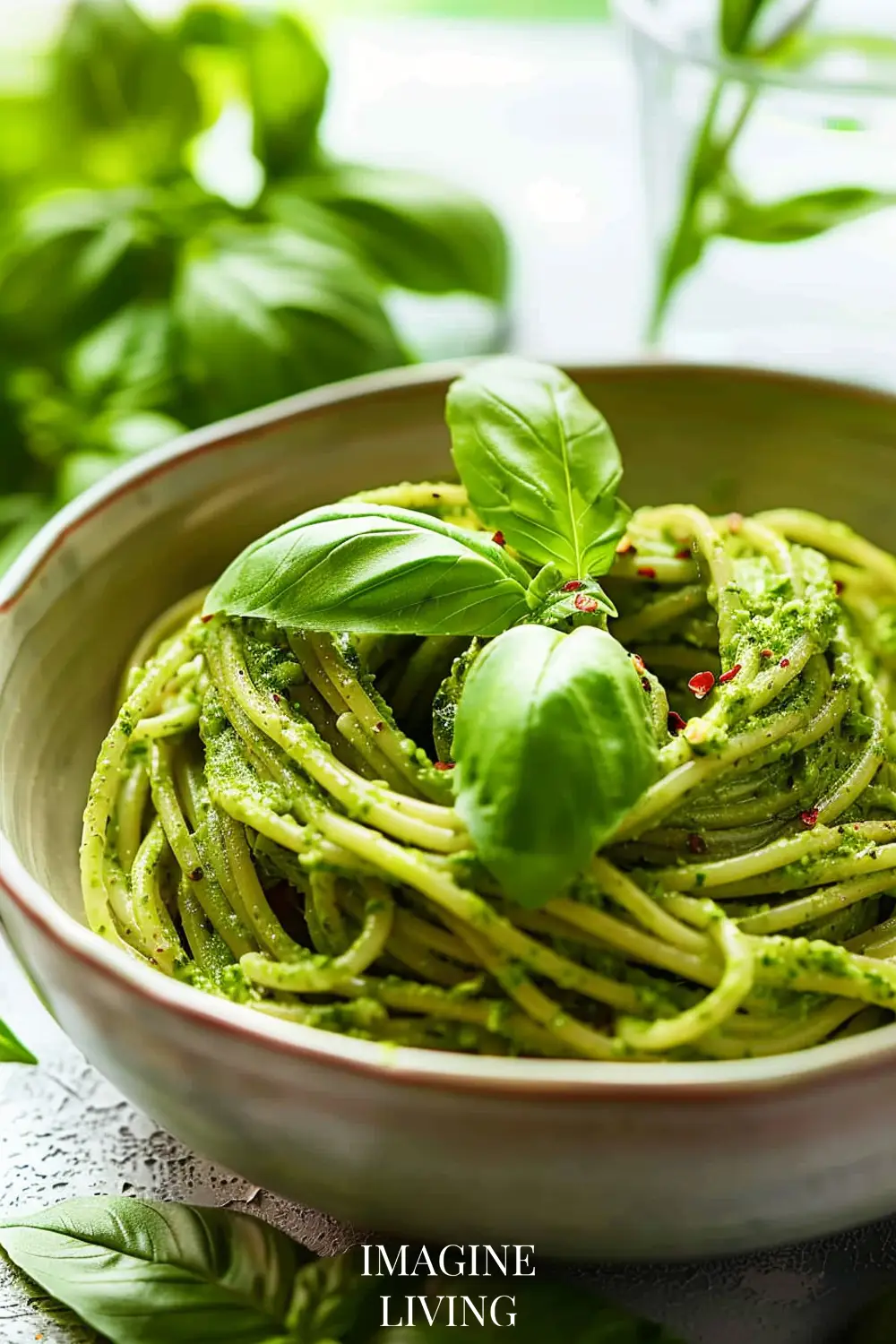
FAQs
Can I Make Pesto Without a Food Processor?
Yes! Use a mortar and pestle for a traditional, rustic texture.
What Pasta Works Best for Pesto?
Linguine, spaghetti, or penne work great, as they hold the sauce well.
Can I Use Dried Basil Instead of Fresh?
No, fresh basil is essential for the signature flavor.
How Can I Make Pesto Less Bitter?
Use younger basil leaves and avoid over-processing.
Can I Make This Recipe Ahead of Time?
Yes! Store the pesto in the fridge for up to 5 days or freeze for longer storage.
The Vibrant Simplicity of Fresh Basil Pesto Pasta
This fresh basil pesto pasta is a testament to the beauty of simple, quality ingredients. With minimal effort, you can create a dish bursting with freshness and flavor. Whether enjoyed as a quick dinner or a special meal with loved ones, this recipe is sure to become a favorite in your kitchen.

Fresh Basil Pesto Pasta
Equipment
- Food processor or blender
- Large pot
- Colander
- Mixing bowl
- Measuring cups and spoons
- Wooden spoon or spatula
Ingredients
For the Pesto Sauce:
- 2 cups fresh basil leaves packed
- 1/2 cup grated parmesan cheese
- 1/3 cup extra virgin olive oil
- 1/4 cup pine nuts or walnuts as an alternative
- 2 cloves garlic minced
- 1/2 teaspoon salt
- 1/4 teaspoon black pepper
- Juice of 1/2 lemon
For the Pasta:
- 12 ounces spaghetti or linguine
- 1/2 cup reserved pasta water
- 1 tablespoon olive oil
- 1/4 teaspoon red pepper flakes optional
- Extra parmesan and fresh basil for garnish
Instructions
Prepare the Pesto:
- In a food processor, combine basil, parmesan, pine nuts, garlic, salt, and pepper. Pulse until roughly chopped.
- Slowly drizzle in olive oil while blending until smooth.
- Add lemon juice and blend again. Adjust seasoning to taste.
- Tip: If the pesto is too thick, add a tablespoon of pasta water to loosen it.
Cook the Pasta:
- Bring a large pot of salted water to a boil.
- Cook the pasta according to package instructions until al dente.
- Reserve 1/2 cup of pasta water before draining.
- Tip: Stir the pasta occasionally to prevent sticking.
Combine and Serve:
- Return the drained pasta to the pot and add the pesto sauce.
- Toss well, gradually adding reserved pasta water until desired consistency is reached.
- Drizzle with olive oil and sprinkle with red pepper flakes if using.
- Serve immediately, garnished with extra parmesan and fresh basil.
Notes
To make it vegan, use nutritional yeast instead of parmesan.
Pesto can be stored in the fridge for up to 5 days or frozen for up to 3 months.

